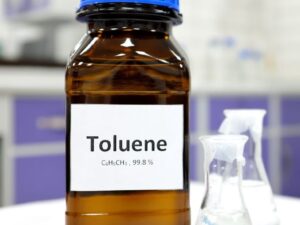Description
Formaldehyde: More Than Just a Preservative
Formaldehyde. The name alone often conjures up images of laboratory specimens preserved in jars. While its use in embalming and scientific preservation is well-known, formaldehyde is a ubiquitous chemical compound with a much wider range of applications, impacting our lives in ways we may not even realize. From the furniture in our homes to the clothes we wear, formaldehyde plays a significant, albeit sometimes controversial, role.
What is Formaldehyde?
Formaldehyde is a naturally occurring organic compound with the chemical formula CH₂O. It’s a colorless gas at room temperature and has a pungent, distinct odor. Although present in the environment naturally, it’s also manufactured in large quantities for use in a vast array of industrial and consumer products.
Beyond the Lab: Its Widespread Uses
Formaldehyde’s versatility stems from its ability to act as a binding agent, preservative, and disinfectant. Here are some key applications:
- Resins and Adhesives: Formaldehyde is a crucial component in the production of resins used in the manufacturing of wood products like plywood, particleboard, and medium-density fiberboard (MDF). These resins bind wood particles together, creating durable and cost-effective building materials.
- Textiles: Formaldehyde-based resins are used to treat textiles, imparting wrinkle resistance, crease retention, and shrinkage control. This helps maintain the appearance and durability of clothing and other fabrics.
- Disinfectants and Preservatives: Formaldehyde is a powerful disinfectant and preservative, inhibiting the growth of bacteria, mold, and fungi. This makes it useful in various applications, including:
- Cosmetics and Personal Care Products: Used in small amounts to prevent microbial contamination, extending the shelf life of products like shampoos, lotions, and makeup.
- Embalming Fluids: As mentioned earlier, formaldehyde is a key component in embalming fluids, preserving tissues for anatomical study, funeral preparations, and medical research.
- Vaccines: Used to inactivate viruses and bacteria in vaccines, making them safe for administration.
- Industrial Applications: Formaldehyde serves as an intermediate in the production of various chemicals, including plastics, fertilizers, and dyes.
The Controversy: Health Concerns and Regulations
Despite its widespread use, formaldehyde has been subject to scrutiny due to its potential health effects.
- Irritant and Allergen: Formaldehyde can irritate the skin, eyes, nose, and throat, causing symptoms like burning sensations, coughing, and sneezing. It can also trigger allergic reactions in sensitive individuals.
- Respiratory Issues: Exposure to formaldehyde can exacerbate asthma and other respiratory conditions.
- Carcinogen: The International Agency for Research on Cancer (IARC) has classified formaldehyde as a known human carcinogen, with evidence linking it to cancers of the nasopharynx and leukemia.
Due to these health concerns, various regulatory bodies have established limits on formaldehyde exposure in different settings. The Occupational Safety and Health Administration (OSHA) regulates formaldehyde exposure in the workplace, while the Environmental Protection Agency (EPA) sets standards for formaldehyde emissions from wood products and other sources.
Minimizing Exposure:
While completely eliminating formaldehyde from our environment is virtually impossible, there are steps we can take to minimize exposure:
- Proper Ventilation: Ensure adequate ventilation in homes and workplaces, especially when using products that may release formaldehyde.
- Low-Emitting Products: When purchasing furniture, flooring, and other building materials, look for products labeled as “low-VOC” (volatile organic compounds) or “formaldehyde-free.”
- Wash New Clothing: Washing new clothing before wearing it can help remove residual formaldehyde.
- Monitor Indoor Air Quality: Consider using air purifiers with activated carbon filters to remove formaldehyde from indoor air.
The Future of Formaldehyde:
Researchers are actively exploring alternative, less toxic materials to replace formaldehyde in various applications. These alternatives include bio-based resins, plant-derived adhesives, and enzyme-based treatments. While these alternatives show promise, they often come with their own challenges, such as cost, performance, and availability.
Conclusion:
Formaldehyde is a complex chemical compound with a wide range of applications, making it an integral part of many industries. While its benefits are undeniable, its potential health risks necessitate careful consideration and responsible usage. By understanding the sources of formaldehyde exposure and taking steps to minimize it, we can protect ourselves and create a healthier environment. As research continues to explore safer alternatives, we can look forward to a future where we rely less on this controversial, yet undeniably useful, chemical.



















Reviews
There are no reviews yet.